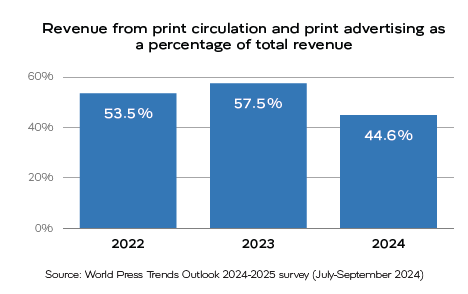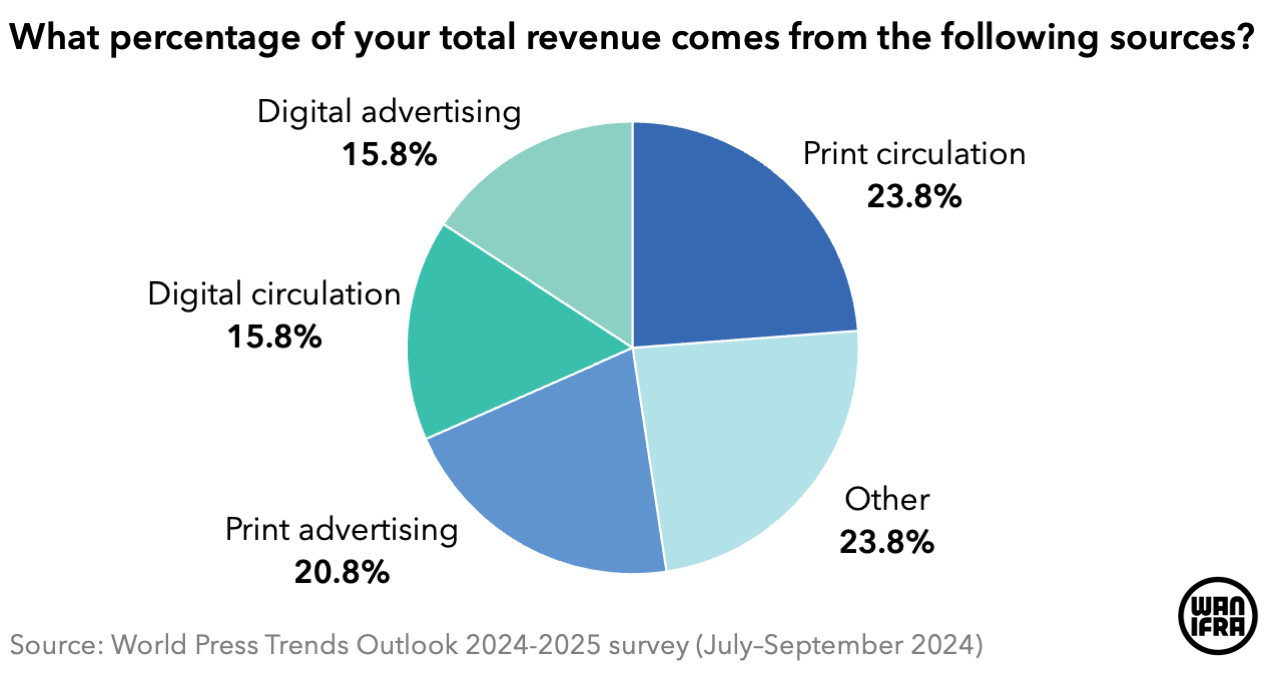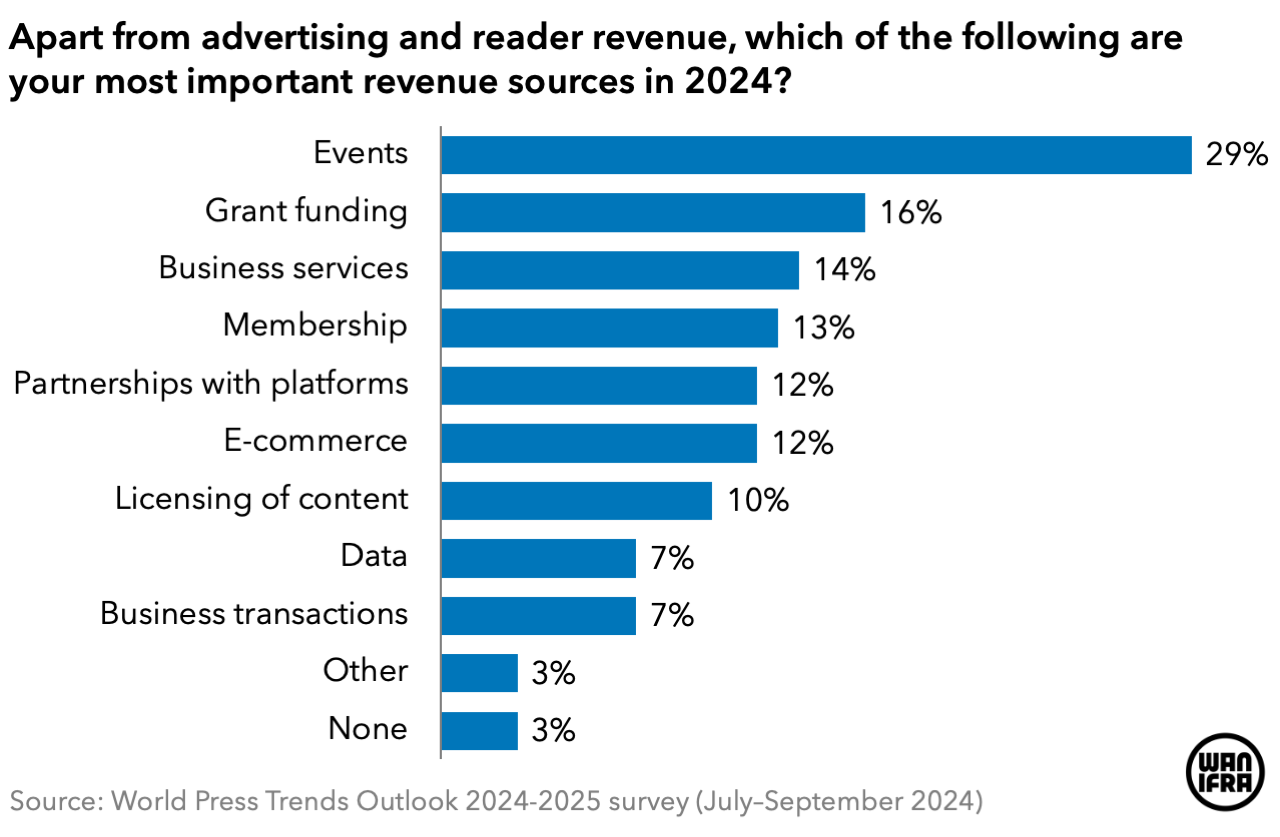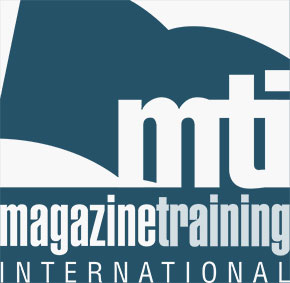
The World Press Trends Outlook 2024-2025, the 30th edition of an annual report by WAN-IFRA (World Association of News Publishers), offers a comprehensive look at the opportunities and challenges facing news publishers worldwide.
Based on a survey of over 240 senior media executives from 85 countries around the world, the report identifies key trends that will shape the industry’s future and provides valuable insights to guide strategic decision-making.
The findings highlight a mix of optimism and caution as news publishers navigate an evolving media landscape characterized by declining print revenues, digital growth, and the rising impact of artificial intelligence.
Here are five key insights from the report that can help media professionals understand the changing dynamics of the industry.
1. The gradual decline of print
For the first time, print revenue has dropped below the 50% mark, accounting for just under 45% of total publisher income. This is down from 57.5% in 2023. While this decline signals a continued shift toward digital, print remains an important source of revenue, especially in markets such as Japan and India, where print readership remains significant.

Some media outlets are using print as a premium product while aggressively expanding their digital footprint through paywalls and membership models. However, the financial challenge of juggling print, while growing digital, remains, especially at a time of rising print production costs and continued shifts in consumer habits.
2. Digital revenue growth — steady but insufficient
Digital revenue now makes up 31% of total revenue, marking a 7% year-on-year increase. Subscriptions, paywalls, and monetization of digital content — such as podcasts and newsletters — are driving this growth. Yet, despite these positive trends, digital growth alone is not sufficient to offset the steep declines in print revenue.
The report suggests that publishers must refine their digital strategies, focusing on personalized content, dynamic paywall models, and audience segmentation to optimize their digital efforts, and to effectively monetize them.

3. Diversifying revenue streams is essential
Revenue diversification has long been a strategic imperative. The report makes that clearer than ever, given the findings about declining income from print and the speed of any digital uptick.
The good news is that across WAN-IFRA’s sample, 23.8% of total revenue comes from alternative sources such as events, e-commerce, and memberships.
These income streams are proving to be critical for long-term sustainability, offering publishers new ways to engage their audiences and generate revenue beyond traditional advertising and subscriptions.

by
Related posts
Magazine Training International’s mission is to encourage, strengthen, and provide training and resources to Christian magazine publishers as they seek to build the church and reach their societies for Christ.

